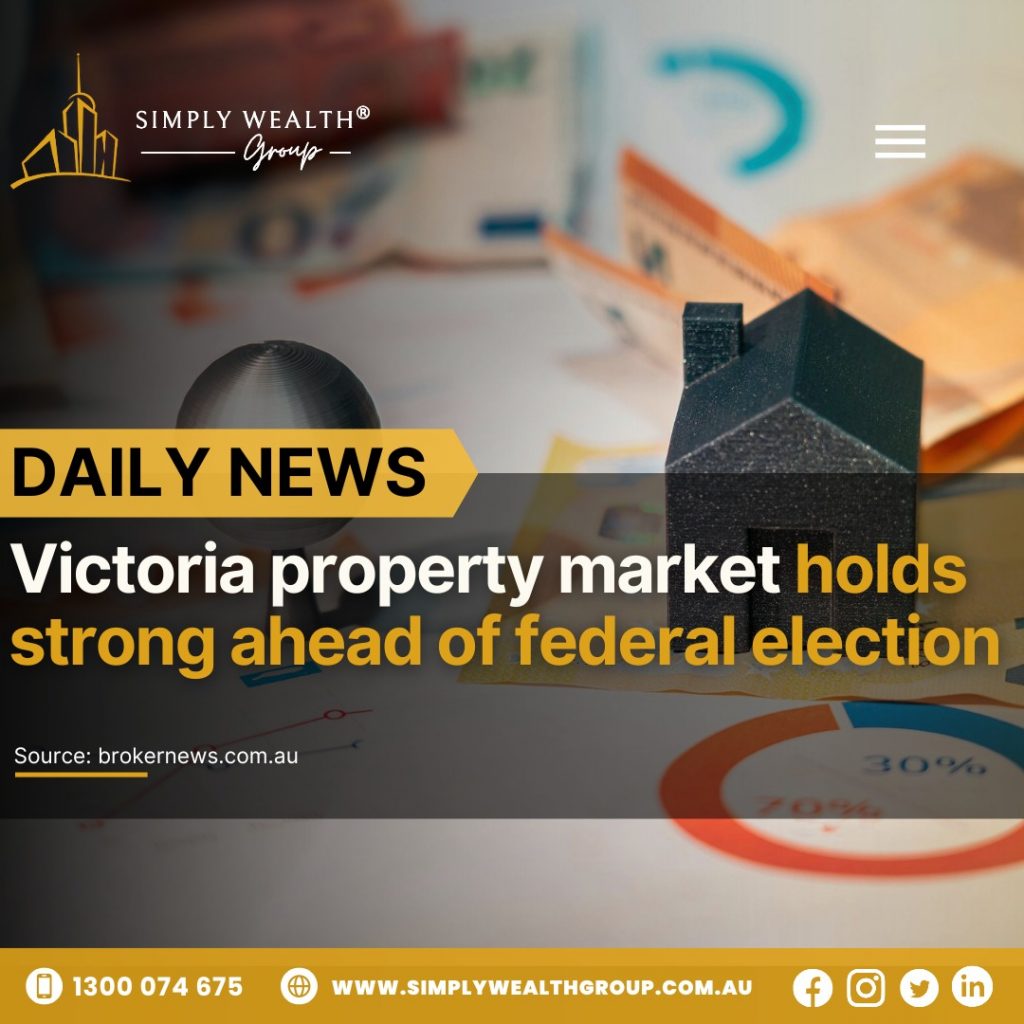Mortgage Repayments Drop for the First Time Since 2021

Mortgage Repayments Drop for the First Time Since 2021 – What It Means for You After more than three years of rising costs and tightening financial conditions, there’s finally a breath of fresh air for Australian homeowners and property buyers. According to new market data, mortgage repayments have officially decreased for the first time since 2021, a move that signals an important shift in the housing finance landscape. In an environment long dominated by interest rate hikes and financial strain, this drop offers meaningful relief and renewed optimism for homebuyers, current mortgage holders, and investors across the country. For many Australians, this development could mark the beginning of a more stable and affordable property journey. 👉 Full article: Click here to read more Let’s break down what this means for different property buyers and owners—and how you can take advantage of it today. A Boost for Homeowners If you’re currently paying off a mortgage, this drop in repayments could help ease the burden on your monthly budget. With interest rates stabilising and some lenders adjusting variable rates downward, homeowners are already noticing a difference in their loan servicing costs. 🏠 Whether you’ve been managing tight household finances or considering refinancing, this is a great moment to review your mortgage terms. With the right advice, you could unlock better rates, lower your monthly payments further, or restructure your loan for greater flexibility. Opportunity Knocks for First-Home Buyers Aspiring homeowners have had to contend with high interest rates, strict lending conditions, and competitive housing prices in recent years. This change in mortgage repayments may open the door for first-home buyers who were previously priced out of the market. 📉 Lower repayments increase borrowing capacity and reduce the financial pressure of entering the property market. Combined with government assistance programs and potential rate cuts on the horizon, conditions are becoming more favourable for first-time buyers to make their move. If you’ve been sitting on the sidelines, now could be the time to act before competition picks up again. Investors: Time to Re-Engage For property investors, this repayment shift is a green light to reassess portfolio growth strategies. With better loan conditions and reduced serviceability pressure, it’s becoming more viable to leverage existing equity or acquire additional investment properties. 💼 In particular, high-growth suburbs and regional hubs with strong rental yields are once again looking attractive as cash flow projections improve. Lower financing costs can lead to improved rental return performance and long-term capital appreciation, making the investment case even stronger. Wider Economic Confidence This development is more than just good news for individual borrowers—it’s also a strong signal that the broader property and lending market is beginning to stabilise. After a challenging period of rapid rate hikes designed to curb inflation, signs are now pointing toward a more balanced and sustainable cycle. 📊 While the Reserve Bank of Australia (RBA) remains cautious, the market is starting to reflect optimism that the peak of the rate hike era may be behind us. This shift could also support consumer sentiment, increased property activity, and a more predictable environment for planning financial and property goals. Strategic Next Steps for You Whether you’re already in the market or planning your first property purchase, it’s critical to understand how this change affects your individual situation. Everyone’s financial circumstances are different, and that’s where expert advice becomes essential. At Simply Wealth Group, we help our clients navigate the shifting market landscape with tailored property and finance strategies. From refinancing existing loans to securing pre-approval for new purchases or identifying high-yield investment opportunities, our team is here to ensure you’re well-positioned to benefit from these changes. 📞 Call our expert team at 1300 074 675💬 Message us on WhatsApp: +61 488 859 637🌐 Visit us online: simplywealthgroup.com.au📱 Stay connected for updates and tips: Follow us on Instagram @SimplyWealthGroup and on Facebook at Simply Wealth Group
Victoria’s Property Market Stands Strong Ahead of Federal Election!

Victoria’s Property Market Stands Strong Ahead of Federal Election As the federal election draws near, many Australians are watching closely to see how policy shifts may impact the housing landscape. In Victoria, however, one thing is clear: the property market continues to hold strong. With consistent buyer demand, promising infrastructure development, and evolving government incentives, Victoria is proving to be one of the most resilient states for real estate investment and homeownership opportunities. Why Victoria Remains a Smart Market in 2025 Despite national political uncertainty, Victoria’s real estate sector remains a beacon of strength and opportunity. Growth suburbs across Melbourne’s west and southeast, along with thriving regional hubs like Geelong and Ballarat, continue to attract both owner-occupiers and investors thanks to their affordability, lifestyle offerings, and long-term capital growth potential. Resilient Market PerformanceVictorian property values have shown steady performance in early 2025. Key growth corridors—such as Tarneit, Melton, Fraser Rise, and Manor Lakes—are maintaining strong demand due to population growth, affordable house-and-land options, and family-friendly planning. Even with interest rate fluctuations and shifting economic sentiment, the Victorian market is demonstrating solid fundamentals. Policy Momentum and IncentivesBoth major political parties are pushing proposals designed to boost homeownership and investment. These include expanded first-home buyer support, such as deposit assistance, shared equity schemes, and increased access to stamp duty concessions. Investors may also benefit from proposed changes to negative gearing and capital gains tax policies, depending on the outcome of the election. These policy conversations are critical because they directly impact affordability, access to finance, and long-term investment returns. Buyers entering the market now could position themselves well ahead of policy implementations, capitalising on today’s prices and tomorrow’s support. Infrastructure Drives GrowthVictoria continues to lead in infrastructure investment, with billions allocated to transportation, healthcare, and education upgrades across metro and regional areas. Major projects—like the Suburban Rail Loop, West Gate Tunnel, and hospital expansions—not only create jobs but increase livability and connectivity, two key drivers of property demand. As infrastructure spreads into outer suburbs, so too does buyer interest. This ripple effect elevates property values, enhances rental yields, and ensures long-term sustainability for homeowners and landlords alike. What This Means for You First-Home Buyers:If you’re entering the market for the first time, 2025 could offer one of the best windows in years. With interest rates showing signs of easing and government incentives potentially expanding, affordability could improve significantly. Purchasing in an area with planned infrastructure or existing growth will help build long-term equity while enjoying the lifestyle benefits of new communities. Investors:From a strategic standpoint, the Victorian market continues to offer a balance of yield and capital growth, especially in the western and northern corridors of Melbourne. Vacancy rates are low, and rental demand is high—making this a prime time to diversify or scale your portfolio. Additionally, pre-election conditions often create motivated sellers and competitive deals. Upgraders and Families:For those looking to move up the property ladder, selling and buying in the same market ensures continuity. You can take advantage of strong demand for quality family homes, while locking in your next property at today’s values before further increases take hold post-election. Stay Ahead of the Curve Property decisions should always be grounded in strategy—and now more than ever, it’s essential to stay informed. Understanding the interplay between politics, policy, and the property market can be your biggest advantage in making the right move at the right time. 📞 Want to explore your options in Victoria’s strongest suburbs?Call us today at 1300 074 675 or message us via WhatsApp at +61 488 859 637🌐 Visit: simplywealthgroup.com.au📱 Follow us on Instagram @SimplyWealthGroup and Facebook at Simply Wealth Group for the latest property tips, market updates, and listings across Victoria.
APRIL PROPERTY BOOST: Home Values on the Rise!

APRIL PROPERTY BOOST: Home Values on the Rise Across Australia The latest CoreLogic report has delivered exciting news for homeowners, investors, and first-time buyers alike—home values across Australia rose again in April 2025, signaling renewed market momentum and growing confidence in the property sector. Whether you’re looking to buy your first home, secure a second property, or expand your investment portfolio, the signs are clear: now is the time to act. What the April Numbers Say According to CoreLogic’s national data: 📊 Home values increased modestly across all capital cities, with Sydney, Brisbane, and Adelaide showing the strongest gains.📈 Regional markets also continued their rebound, benefiting from affordability and lifestyle-driven relocations.🔁 Buyer activity is increasing, supported by lower listings and stronger auction clearance rates—a telltale sign of returning demand. These changes are part of a broader market recovery trend, fuelled by the expectation of interest rate cuts from the RBA, competitive lending offers, and a stable economic outlook. Why This Matters Right Now This uptick isn’t just a data point—it’s a market signal. Here’s what it means for key buyer groups: ✅ Investors Rising home values are a green light for investors who have been waiting on the sidelines. Capital growth is re-emerging, making the buy-and-hold strategy more appealing. Rental yields remain strong, especially in growth suburbs like Fraser Rise, Manor Lakes, and Cranbourne East—thanks to limited supply and increasing tenant demand. With lower interest rates likely on the horizon, borrowing conditions will only improve, giving investors more leverage and long-term savings. ✅ First-Home Buyers If you’re looking to enter the market, the window is still open—but not for long. Current prices remain manageable in many outer-metro and regional hubs. Stamp duty concessions and first-home buyer grants are still active in most states. Early movers can lock in favourable mortgage rates before competition heats up and prices climb further. What’s Driving the Market Momentum? Several macroeconomic and policy-driven factors are at play: 💰 Interest rate relief is expected in the coming months, increasing buyer affordability and loan capacity.🏗 Construction is stabilising, but supply remains constrained—especially for new homes, supporting upward price pressure.📉 Low listing volumes are pushing buyers to compete for limited quality stock.🏛 Government incentives and infrastructure investments are boosting confidence in suburban and regional markets. The combination of these trends is creating the perfect storm for a market uplift—and the smart money is already responding. Don’t Miss the Next Wave Timing is everything in real estate. And if April’s figures are any indication, the market is beginning to turn a corner. Buyers who make their move now can ride the next growth wave, rather than chasing it later when competition spikes. 🌊 This is your chance to get ahead of the curve—before price rises become more aggressive and lender competition starts to cool. Ready to Take Action? Whether you’re ready to buy your first home, invest in a high-growth suburb, or simply explore your options in today’s market—we’re here to help. At Simply Wealth Group, we specialise in helping clients like you navigate the property cycle with confidence. 📞 Call us today on 1300 074 675 to book a free strategy session with one of our experienced property advisors.💬 Prefer messaging? Reach us on WhatsApp at +61 488 859 637🌐 Visit simplywealthgroup.com.au to browse our latest house & land packages📱 Follow us on Instagram @SimplyWealthGroup or on Facebook for ongoing property insights and client success stories! 🏡 April’s numbers don’t lie—the property market is buzzing again. Don’t wait. Take your next step with Simply
Mortgage War Alert: Rate Cuts Are Shaking Things Up!

Mortgage War Alert: Rate Cuts Are Reshaping the Market Australia’s latest cash rate cut has triggered a new wave of mortgage competition—and for buyers and investors, the timing couldn’t be better. With banks slashing rates and lenders rolling out aggressive offers, the playing field is wide open. Whether you’re looking to secure your first home, refinance your current loan, or expand your investment portfolio, this could be the window you’ve been waiting for. 💥 Lower interest rates mean increased borrowing power—giving you access to properties that may have been out of reach just months ago. 📈 As borrowing becomes more accessible, approval rates are rising and property activity is heating up across key growth corridors. 💸 With competitive loan packages and cashback incentives, homeowners are locking in better deals and saving big over the life of their loans. Why This Matters for Buyers and Investors Alike If you’ve been sitting on the fence, now is the time to take action. Reduced borrowing costs and renewed buyer confidence are already impacting property prices. The smart money is moving, and early movers are seizing opportunities before the next upswing gains momentum. 🏡 First-home buyers can stretch their budgets further and enter the market with confidence. 📊 Seasoned investors are refinancing at lower rates, unlocking equity to fuel further acquisitions. 🔑 Homeowners looking to upgrade can make their next move while conditions remain favorable. What Should You Do Now? ✅ Review your current mortgage rate—there may be better deals available today that could save you thousands.✅ Speak with a finance specialist to understand your updated borrowing capacity under the new rate environment.✅ Explore emerging high-growth suburbs while competition is still manageable and prices remain accessible. The property and lending markets are shifting quickly—and being proactive is key to getting ahead. 📞 Need help navigating the market or securing a great deal? Our team is here to help. 📲 Call 1300 074 675🌐 Learn more: https://tinyurl.com/3cfb5sbt📱 Follow us on Instagram and Facebook @SimplyWealthGroup for ongoing market updates and expert insights. 📣 The mortgage war is real—and the winners will be those who act early. Let’s get you ahead of the curve.
Buy, Sell or Wait? Big Moves Ahead for Aussie Property

Buy, Sell, or Wait? Election Sparks Big Questions in Property Market Australia’s property market is buzzing with anticipation as the upcoming federal election draws near. With political parties unveiling housing promises and economic policies, many Australians are asking the big question: is now the time to buy, sell, or hold? The short answer? Opportunity is in the air—regardless of which direction you lean. Election Season Brings New Possibilities As the political landscape shifts, housing policy often takes center stage. Whether it’s new grants for first-home buyers, tax incentives for investors, or funding for housing supply, the weeks leading up to an election are crucial for shaping the real estate outlook. 🌟 For buyers, new government incentives could mean more financial support and easier pathways into the market.📈 For sellers, increased confidence and activity could drive stronger demand and competitive offers.🏢 And for investors, policy changes may unlock fresh opportunities in fast-growing areas and high-yield asset classes. What This Means for You Buyers: If you’ve been waiting for the right time to enter the market, this pre-election period might present the perfect window. Government-backed grants or reduced stamp duty schemes could be announced soon, offering real financial advantages. Sellers: With market momentum growing and interest rates stabilising, now could be a smart time to list. Buyer confidence is returning, and the right property in the right location could fetch strong interest. Investors: Market shifts driven by political decisions often create ideal conditions for long-term investment. Keep an eye on infrastructure announcements, housing affordability schemes, and tax policy updates—they could be the key to your next high-performing asset. 💡 No matter your position in the market, the key is staying informed, understanding your goals, and moving strategically. How to Stay Ahead The best way to navigate an uncertain but promising market is with expert advice and forward planning. At Simply Wealth Group, we’re closely monitoring political developments, market movements, and economic indicators to help you make smart, confident property decisions. 📲 Ready to take action, or just want to explore your options? Let’s chat.📞 Call us on 1300 074 675🌐 Visit simplywealthgroup.com.au📱 Follow us on Instagram and Facebook @SimplyWealthGroup for the latest updates and expert insights Read the Full Story Here👉 tinyurl.com/3p9f493y 🏡 The next move could be game-changing—make sure it’s the right one for you.
BIG NEWS: May Rate Cut? It’s Basically a Done Deal!

May Rate Cut Expected – Big Opportunities Ahead for Buyers and Investors Exciting news is sweeping across the finance and real estate sectors—a major bank has signalled that a May interest rate cut is almost certain 📉🔐. This shift could open up a wealth of new opportunities for both homebuyers and investors alike. What Does This Mean for You? Lower Repayments: Enjoy reduced monthly repayments, making homeownership and investment more affordable. Increased Borrowing Power: Secure a higher loan amount, allowing you to expand your property search or invest in higher-value assets. Simpler Path to Ownership: Whether you are purchasing your first home or your next investment property, now could be the easiest time to step into the market in years. You can read the full update here: https://tinyurl.com/5xnrzv8b Why Act Now? If you have been waiting on the sidelines, unsure whether to buy, refinance, or invest, this upcoming rate cut could be the signal you have been waiting for 🔥💼. Lower interest rates generally lead to greater competition in the property market, and acting before the crowd can give you a significant advantage. Imagine locking in your dream property with reduced rates and positioning yourself ahead of the next wave of price increases 🏡💰. Strategic timing could be the key to achieving stronger returns and long-term financial security. Let Simply Wealth Group Help You Succeed At Simply Wealth Group, we are dedicated to helping our clients capitalise on market opportunities with smart, tailored strategies. Whether you are a first-home buyer, a seasoned investor, or looking to refinance for better terms, we are here to guide you every step of the way. 📞 Call us today: 1300 074 675🌐 Visit us online: simplywealthgroup.com.au📱 Stay informed: Follow @SimplyWealthGroup on Instagram and Facebook Do not wait for the market to shift—let’s get you ready to win in this evolving landscape. 🚀
Property Listings Surge as Interest Rate Cuts Boost Seller Confidence!

Property Listings Surge as Interest Rate Cuts Boost Seller Confidence The Australian real estate market is experiencing a fresh wave of momentum, thanks to recent interest rate cuts that are revitalising seller confidence and opening up new opportunities for buyers and investors alike. Across the country, more listings are appearing as homeowners see favourable conditions to sell—and that’s good news for anyone looking to enter or expand in the property market. 📈 With interest rates easing, competition among buyers is starting to soften, giving home seekers more choice and greater flexibility when it comes to negotiation 💰. This shift in market dynamics could be the key that opens doors for first-home buyers and seasoned investors alike. Why This Matters Right Now ✔️ More Listings, More Choice: The increase in properties hitting the market means buyers have a broader selection across various suburbs and property types 🏘️. ✔️ Improved Financing Conditions: Lower interest rates mean improved borrowing power, more manageable mortgage repayments, and better access to finance 💸. ✔️ Renewed Confidence: Sellers are feeling more optimistic, creating a more dynamic, fast-moving market with higher turnover and stronger competition 🔥. If you’ve been waiting for the right time to act, this could be your window. The rate cuts are not just economic headlines—they’re influencing real, tangible movement in markets nationwide. How Simply Wealth Group Can Help At Simply Wealth Group, we specialise in helping clients make the most of market cycles. Whether you’re buying your first home, upgrading your current residence, or looking to grow your investment portfolio, our team provides expert guidance and tailored solutions to suit your goals. We work closely with trusted developers, lenders, and property professionals to deliver turnkey packages, strategic advice, and long-term wealth-building opportunities. From sourcing the right suburb to securing competitive finance and managing every step of the process—we’re here to make it simple. 💬 The real estate market doesn’t wait, and neither should you. With more listings available, now is the perfect time to explore what’s possible for your financial future. 📞 Call us at 1300 074 675🌐 Learn more at simplywealthgroup.com.au📱 Follow us on Instagram and Facebook @SimplyWealthGroup
Asset Finance Powers Property Market Growth Across Australia!

Asset Finance Powers Property Market Growth Across Australia There’s a powerful shift happening in Australia’s property landscape—one that’s quietly fueling the next wave of growth and opportunity. And at the heart of this transformation? Asset finance. While traditionally associated with vehicle purchases or commercial equipment, asset finance has evolved into a strategic financial tool reshaping how Australians access property. According to a recent report by Broker News, asset finance is no longer just a side player—it’s becoming a central force in Australia’s real estate and lending markets. What’s Driving the Change? With interest rates stabilising and many Australians reassessing their financial strategies, more homebuyers and investors are turning to asset finance for flexible funding solutions. Whether it’s unlocking equity from existing assets or using a tailored financing structure to purchase a new home, this approach is providing an innovative edge in a competitive market. 📈 The shift isn’t just theoretical. Industry insiders are already seeing an increase in property market activity that can be linked directly to the smart use of asset finance. From first-home buyers seeking creative ways to get on the property ladder, to seasoned investors expanding their portfolios without tapping traditional bank loans, asset finance is providing an agile path forward. Why Asset Finance Matters in 2025 ✨ As the property market begins to rebound, access to adaptable financial solutions is more important than ever. Here’s why asset finance is gaining traction: ✅ Easier access to funding – Unlock capital tied up in assets like vehicles or business equipment to support property purchases. ✅ Increased market activity – More buyers with access to flexible funding means more transactions and healthier market movement. ✅ Tailored lending strategies – Customised solutions offer borrowers more control and faster turnaround times than traditional loan pathways. This is especially relevant in a year where affordability remains a challenge for many Australians. Asset finance opens doors that conventional loans may leave closed—offering new routes into ownership and investment. A Game Changer for Homeowners and Investors For homeowners, asset finance can be a smart way to leverage existing equity or diversify funding sources without sacrificing liquidity. For investors, it offers the agility to move quickly on new opportunities, all while managing financial risk more effectively. And with economic indicators like slowing inflation, stable interest rates, and housing policy reform pointing to broader recovery and growth, the timing couldn’t be better to explore innovative financing solutions. 💡 As property experts at Simply Wealth Group, we’re closely tracking these developments to ensure our clients stay ahead of the curve. Our goal is to help you make smarter financial decisions that work with the market, not against it. Want to Learn How Asset Finance Could Work for You? If you’re thinking about entering the market, growing your portfolio, or simply curious about how you can make your money work smarter in 2025, asset finance could be the tool you didn’t know you needed. 📞 Give us a call at 1300 074 675 or send a message via WhatsApp at +61 488 859 637 to start the conversation. 🌐 Learn more by visiting simplywealthgroup.com.au 📱 Stay up to date with the latest property and finance insights—follow us on Instagram and Facebook @simplywealthgroup
From Bargain Buys to Million-Dollar Mansions!

From Bargain Buys to Million-Dollar Mansions Australia’s property market is showcasing some of the most fascinating contrasts we’ve seen in years—where first-home buyers are scooping up budget-friendly properties in emerging suburbs, while luxury buyers are splashing millions on breathtaking waterfront estates. Whether you’re looking for a humble home in a quiet neighborhood or the next trophy asset in an elite enclave, there’s a suburb out there that fits your budget and vision. This current landscape is a clear reflection of Australia’s diverse housing market—one that’s shaped by affordability, supply-demand dynamics, location desirability, and lifestyle trends. As we dive into 2025, the gap between entry-level properties and high-end residences has never been more pronounced. Budget-Friendly Suburbs: Where First-Home Buyers Are Heading For many first-time buyers and young families, affordability is still king. Suburbs like Gagebrook and Bridgewater in Tasmania are emerging as top choices due to their low median house prices and close-knit communities. 🏠 Gagebrook, TAS – With median home prices well under the national average, this suburb offers a chance for buyers to break into the property market without stretching their finances. It’s an appealing option for those who value affordability, proximity to Hobart, and a peaceful environment. 🏠 Bridgewater, TAS – Similarly, Bridgewater is attracting attention for its affordable homes and strong rental yields. With improved infrastructure and community development on the rise, it’s becoming an increasingly desirable place to live and invest. These suburbs are more than just budget buys—they represent smart opportunities for those who recognize the value of getting in early before wider recognition drives prices up 📈. Million-Dollar Suburbs: Australia’s Most Exclusive Postcodes At the other end of the spectrum, elite suburbs like Point Piper in New South Wales continue to set record-breaking property prices. These luxury markets are fueled by ultra-high-net-worth individuals seeking exclusive, architecturally designed homes in prime waterfront locations. 💎 Point Piper, NSW – Often topping the list as Australia’s most expensive suburb, Point Piper boasts multi-million-dollar mansions with panoramic harbour views. Some recent sales have even exceeded $45 million, solidifying its status as a global luxury hotspot. 💎 Other high-end locales like Toorak (VIC), Mosman (NSW), and Hamilton (QLD) also attract discerning buyers looking for prestige, proximity to city centres, and world-class amenities. In these suburbs, it’s not just about square footage—it’s about lifestyle, legacy, and exclusivity. For investors, the ultra-luxury market offers stability and long-term appreciation potential, especially in times of global economic uncertainty 🌍💼. What’s Driving These Contrasts? The stark divide between bargain suburbs and premium markets is shaped by several underlying factors: Interest Rate Changes: The Reserve Bank’s recent rate cuts are giving both ends of the market a boost—making finance more accessible for first-time buyers and offering leverage opportunities for high-end investors. Housing Supply and Demand: A continued shortfall in housing supply has put upward pressure on prices in many areas. While outer suburbs remain more affordable, inner-city and lifestyle-rich postcodes are becoming increasingly competitive. Lifestyle Trends: Post-pandemic shifts continue to influence buyer decisions. Some are prioritizing space and affordability in regional hubs, while others are doubling down on luxury, location, and lifestyle. Where Should You Buy Next? Whether you’re after your first home, next home, or a strategic investment, Australia’s diverse market has something for everyone. The key is understanding where growth potential meets your personal goals—and staying ahead of shifting trends. 📲 Curious where YOU should buy next?Our property specialists at Simply Wealth Group are here to help you navigate every corner of this dynamic market—from up-and-coming suburbs to elite postcodes. 🔗 Read the full scoop: https://bit.ly/42C8G4V📞 Call us: 1300 074 675🌐 Visit: simplywealthgroup.com.au📱 Follow us: Instagram @SimplyWealthGroup Whether you’re looking to buy low, grow equity, or go luxe—there’s never been a better time to find your place in the Australian property market.
Brighter Days Ahead: Directors See Light at the End of the Economic Tunnel

Brighter Days Ahead: Directors See Light at the End of the Economic Tunnel After years of economic turbulence, 2025 is ushering in a fresh wave of optimism across Australia’s financial and property landscapes. Recent insights from MPA (Mortgage Professional Australia) reveal that the country’s leading business directors and executives are feeling significantly more confident about the direction of the national economy. And for property buyers, sellers, and investors alike, that renewed optimism could be a game-changer. Australia’s economic recovery is gaining momentum, with a number of key factors contributing to a more stable and hopeful outlook. From declining inflation rates to government reforms in housing supply and infrastructure investment, there is a clear sense that we are moving toward a more balanced and opportunity-rich environment. The Factors Fueling Economic Optimism According to MPA’s analysis, several forces are converging to paint a brighter picture for the months and years ahead: ✔ Slowing InflationOne of the major drags on household spending and investment over the past few years has been high inflation. The good news? Inflation is showing clear signs of easing. This is restoring purchasing power to consumers and giving policymakers room to maneuver, particularly around interest rates. ✔ Stable Interest Rate OutlookFollowing a series of rate hikes over 2023 and early 2024, the Reserve Bank of Australia made a pivotal move in February 2025 by cutting the cash rate by 25 basis points. That shift signaled a potential plateau in rate increases—and has lifted confidence among homebuyers and business owners alike. With rates stabilizing, borrowing becomes more predictable, and lending activity is expected to pick up 📉. ✔ Housing Supply ReformsGovernments at both state and federal levels are under pressure to address Australia’s chronic housing undersupply. New initiatives and planning reforms aimed at unlocking land, fast-tracking approvals, and incentivizing build-to-rent developments are being rolled out. These reforms, while still in early stages, indicate a commitment to long-term housing market stability 🏘. ✔ Infrastructure Investment and Job CreationOngoing government investment in key infrastructure projects across transport, health, and education is injecting billions into local economies and creating thousands of jobs. Not only does this support employment and wage growth, but it also strengthens housing markets in surrounding areas by boosting demand and liveability 🚧. What This Means for Property Buyers and Investors For those involved in the property market, the timing of this economic shift could not be better. A more stable interest rate environment means increased affordability and confidence for first-home buyers, who were previously sidelined by uncertainty and high loan servicing costs. In addition, regional and outer-metro areas are attracting renewed interest, thanks to infrastructure-led growth and remote work flexibility. Investors, in particular, are beginning to eye locations with strong job pipelines and new transport links as prime candidates for capital growth and rental demand 📈. With buyer sentiment improving and lending conditions expected to ease slightly, we may see a return of competitive buying activity. This could also push property values upward in areas where demand outpaces supply—creating urgency for buyers to act sooner rather than later. Planning Ahead in 2025 If you’ve been waiting for the right time to enter or re-enter the property market, 2025 might just be your year. The convergence of economic optimism, better lending conditions, and ongoing supply constraints means opportunities will arise—but they may not last forever. This is the perfect moment to: 🔍 Review your financial readiness🏡 Research growth corridors and infrastructure zones📑 Speak with property experts about off-market or turnkey opportunities💡 Develop a strategy tailored to market cycles Let’s Make 2025 Your Year of Opportunity Whether you’re a first-home buyer, an upgrader, or a seasoned investor, staying ahead of the curve is key. At Simply Wealth Group, we help everyday Australians navigate the property landscape with confidence and clarity. 📞 Want to know how to take advantage of this economic shift? Call us at 1300 074 675🌐 Visit: simplywealthgroup.com.au📱 DM us on Instagram @simplywealthgroup or Facebook Simply Wealth Group Opportunity is on the horizon. Let’s help you reach it.

